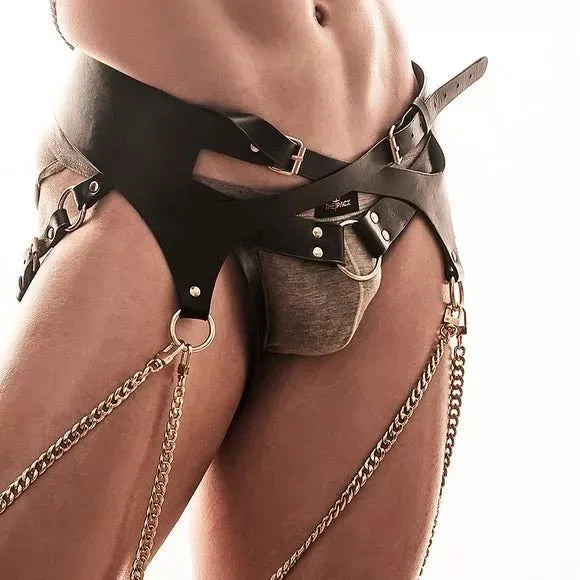
HOW TO CARE FOR LEATHER HARNESSES AND GEAR
The reasons for leather’s appeal aren’t hard to understand. It’s a material our ancestors used for clothes, pouches, and a variety of other useful wares. Adding to this literal toughness, is an aura of it, borne from the material’s ancient connection to hunting and killing. Plus, leather just looks dang good.
While it’s tough as nails, we must also remember that leather is in fact skin. It can dry, crack, stain, warp, etc. So today I’ll walk you through the various options for treating and taking care of leather so that whatever form it takes can be passed down your family line.
Note that much of the below applies mostly to everyday use items. Your Holland harnesses can still be cared for with these tips, they generally just don’t need as much attention since you probably don’t wear them out on a daily.
WHAT LOOK ARE YOU GOING FOR?
The first thing to consider is simply what you want your leather to look like, and the role it plays in your life. A moto jacket will likely naturally get more beaten up than a bomber jacket you wear around town – such is the nature of riding a motorcycle down the freeway with leather over your shoulders.
It also comes down to taste. Some men want a clean, polished look for their leather, while others are okay with scratches, blemishes, and prefer to minimally treat their leather items, allowing them to have the beaten-to-hell look that tells tales of (hot and steamy) adventures.
So think about what you want your leather to look like, and next, we’ll go through some various treatment options.
DIFFERENT TREATMENTS
If you’re like me, you may have thought that giving your leather wear a good polish every now and then is all that leather needs to stand the test of time. All the creams, polishes, waxes, and conditioners in the shoe care section of a department store blend together in my mind. They’re not totally interchangeable though and it comes down to your preferences and environment.
Polish. Polish is largely actually for aesthetics. It’s mostly about the actual shine of the product rather than protecting it from the elements. Having said that, many polishes nowadays have a moisturizing element, so you really have to look at the product description to know what you’re getting and what it does.
Conditioner/Cream. Leather conditioner or cream moisturizes the material so that it doesn’t dry out and crack. This won’t make your gear “shine,” but it will protect them. Note that in most cases conditioners don’t waterproof your leather (though some do include a water-repelling component). Leather conditioners are lotion-like, and are to be gently rubbed into the leather. The hide will soak up the conditioner, just like your skin would soak up a moisturizer.
How often you use conditioner, as with the other treatments, really depends on what you want, and on whether you live in a humid or dry climate. If you prefer your leather to look pristine and supple, treating it every 6 months or so is a base. For a more rugged and tough look, every 12 -15 months allows it to accrue some scuffs, scratches, etc.
Waterproofing. Waterproofing provides a coating to your shoe to repel water, snow, baby drool, etc. These treatments generally only need to be done once a year, depending on your use of the product. Sprays should be reapplied multiple times, whereas waxes are much more durable and can be applied with greater precision and control. Think about it: with a spray, you’ll be coating D-Rings, metal labels, chains, etc., perhaps unnecessarily wearing them and exposing them to chemicals.
Damp Cloth. Using a damp cloth is the good old fashioned (and reliable!) way when it comes to leather care. Since leather is so very naturally durable anyway, giving it a wipe down once a month to get rid of the dirt and dust will be a basic and sufficient care routine. If you use nothing else, this is the way to go. Please do NOT use soap as the chemicals might damage your leather.
TREATMENT OPTIONS
How do you navigate the chaotic product descriptions that promise the world and aren’t as clear as this article? Simply said, you largely have to rely on your own research of a particular product and ultimately, you just need to test the various treatments to see what they do to your leather - how it looks, how it wears, how it handles the elements, etc. Leather is indeed hardy, so if you’re following the principles below, don’t worry too much about messing up your gear with the wrong product.
CARE PRINCIPLES
Leather needs to breathe. Just like skin, leather needs some ventilation to prevent mildew and rot. Air can naturally pass through leather, leaving moisture to evaporate naturally. That can’t happen when your leather is all sealed up, though. So don’t ever store or transport it in a plastic grocery bag (whoops - guilty of that one!), and use some type of breathable fabric. Hotel laundry bags or pillowcases are great to store your leather accessories.
Keep leather away from direct sunlight/heat. If a leather item gets waterlogged, it can be tempting to throw it in front of a heater or to use a hair dryer to speed the process. Don’t do that, ever. Just like skin and other fabrics, when leather gets wet and then heated right away, it can shrink and dry out too quickly. Rather, let it dry naturally, even if it takes a couple days.
Also, just generally keep leather out of direct sunlight when storing. The leather fades naturally over time, but sunlight speeds up that process. Drying and cracking can also ensue. Darker places with some humidity are preferred, although again, ensure air flow so that mildew can’t form.
Test first. When applying any polish or conditioner, always test a small area first. Any item is likely to change the color of the leather, even if only slightly. Before applying a treatment to an entire product, test it on a small portion, let it dry for 24 hours, and see what happens. It may seem tedious, but it can keep your gear from looking different than what you want. If a certain brand/color goes well the first time, then feel free to use repeatedly without testing again.
Regularly clean with a damp cloth. As mentioned above, the most foolproof way to keep any leather product from prematurely aging, even if you do nothing else, is to give it a regular wipe-down with a damp cloth. Preserve your leather by wiping them down monthly, or just after a bender on pride weekend, and let it rest until dry before storing it safely.
To sum up, ensure that you have a good routine for caring for your leather products. In many instances, it will look something like these 3 easy steps:
- Wipe down leather with a damp cloth once a month depending on use and accumulated dirt and grime.
- Condition leather every 6 - 12 months, depending on your desired look and the
- Waterproof once a year, if desired.
Hope that helps and that you’ll enjoy your leather gear as long as possible!














